The proper approach to Add Outcomes to Audio in Audacity
Cleaning up recordings is an outstanding use case for Audacity. Nevertheless it absolutely’s merely the tip of the iceberg by way of the favored audio editor’s capability to control clips. On excessive of all technique of enhancing devices there are a heap of audio outcomes constructed into Audacity that could be utilized to audio recordings creatively to get the sound you require.
Audacity is an unimaginable piece of free and open provide software program program that is useful for all sorts of audio processing and enhancing. We’ve already checked out how one can arrange Audacity and the way you need to use it to clean up audio. The reality is, in that article, we used outcomes as devices to clean up the audio recordings and to remove or lower undesirable noise and completely different artefacts. On this how-to we’re going to take a look at making use of outcomes for inventive outcomes.
We’d urge you to experiment with all the outcomes constructed into Audacity nonetheless be certain you don’t export your creatively affected audio over a prized audio recording. It’s possible you’ll check out and experiment with nearly any audio file. Making a quick powerful recording of your voice to use on is an effective suggestion.
Deciding on an Audio File in Audacity
We’ll apply outcomes to each all of the audio file, or selectively to tracks and elements of audio. Every are merely achieved with Audacity.
1. Click on on on File – Open and open your check out audio file. Audacity can cope with many different file codecs and, for the wants of testing out audio outcomes, it’s not too important what sort of audio file we use. Alternatively you’ll click on on the file button and file a short audio monitor using your laptop’s in-built microphone.
2. Select all of the clip by pressing Administration + A.
Alternatively, you’ll select part of the audio clip by left clicking and dragging to deal with an area inside the audio clip.
Together with Reverb to Audio in Audacity
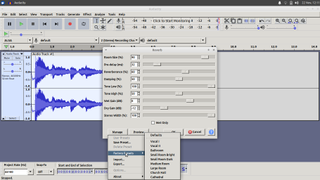
Reverb, which is temporary for “reverberation” might be basically essentially the most usually used audio influence. In Audacity, it makes the audio sound choose it has been recorded in a reverberant home and it’s possible you’ll change the settings to emulate completely completely different sizes and sorts of reverb “rooms”.
1. Select some or your complete audio clip.
2. Click on on on Influence >> Reverb. It is best to now see a window appear which has all the controls and settings for the reverb audio influence.
3. Click on on Deal with and Select “Manufacturing facility Presets”.
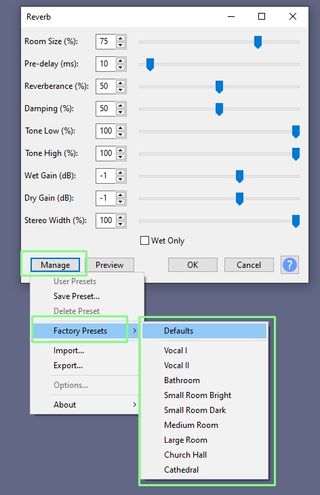
4. Try each of the presets using Preview. Now you may hear the reverb influence utilized to your audio monitor in preview for just some seconds. It’s possible you’ll stop the preview to change settings using the “stop” button.
5. Use the sliders to tweak the reverb settings. Pretty than make clear every setting inside the Reverb influence it’s less complicated so to play with the sliders and take heed to the modifications in influence.
A typical pair of settings are the “Dry Obtain” and the “Moist Obtain” in simple phrases the Dry Obtain adjusts the amount of the distinctive audio signal with none outcomes utilized. Moist obtain equally adjusts the amount of the signal inside the remaining output. These phrases are generally included in many of the outcomes objects in audio functions and customarily are found as a single slider mixing between Dry and Moist.
Together with Silence to End of Clip for Reverb Tail in Audacity
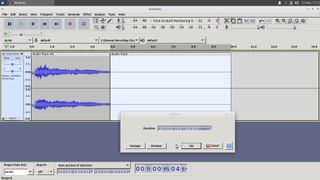
Sometimes everytime you apply reverb to a clip, the reverb will end abruptly on the end of the audio clip and you can successfully want the reverb to path naturally after the last word audio clip contents. To do this in Audacity, now we have to generate and add a silent half onto the highest of our current audio clip after which, as soon as we apply a reverb influence, there could also be room on this silence for the reverb tail.
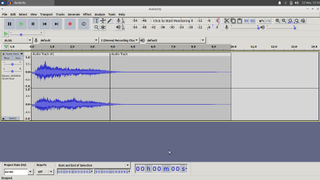
1. Open a model new check out audio file and click on on the “Skip to End” button on the transport toolbar or press “Okay” on the keyboard to maneuver the play head to the highest of the clip.

2. Click on on on Generate >> Silence.
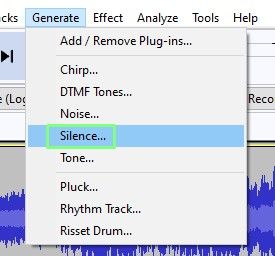
3. Set the scale of silence you need to add and click on on OK in order so as to add a chunk of silent audio to the highest of the clip inside the chosen monitor.
4. Apply a reverb to all of the audio clip. The reverb will proceed into the newly created clip and might fade naturally.
Together with a Distortion Influence in Audacity
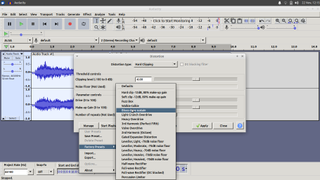
It’s easy to presume that distortion outcomes are all about making audio sound like heavy metallic. Whereas distortion settings can actually create such sounds, they will even be utilized in lots of additional strategies.
Subtly utilized distortion can add warmth to recordings or to make audio sound choose it has been recorded on tape and completely different traditional setups. The strategy of constructing use of distortion is comparable because it’s for making use of all audio leads to Audacity.
1. Select all or part of an audio clip.
2. From the Influence menu select Distortion.
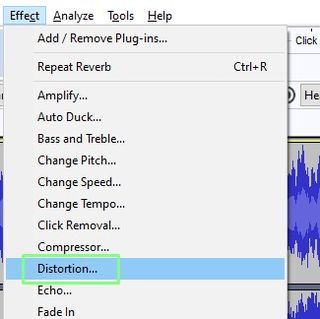
3. Click on on Deal with and Select “Manufacturing facility Presets”.
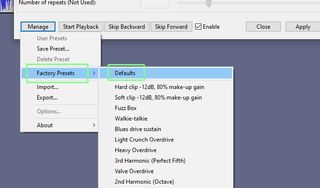
4. Try each of the presets using Start Playback. Observe that, with the Distortion influence, you’ll have three buttons: “Start Playback”, “Skip Backward” and “Skip Forward.” With these three buttons, you’ll preview the distortion utilized to the audio, make modifications if wished and skip throughout the chosen audio to hearken to the modifications.
5. Click on on apply in order so as to add the distortion influence to your audio. One issue of phrase is that together with Distortion might trigger your audio to “clip” which is the place the audio passes by way of the 0dB ceiling. This will set off glitches and pops in audio system and headphones which could possibly be uncomfortable for the listener. All through the Distortion dialogue, it is best to make the most of the “clipping stage” slider to deal with this influence, lowering the value to decrease the amount of clipping inside the affected monitor.
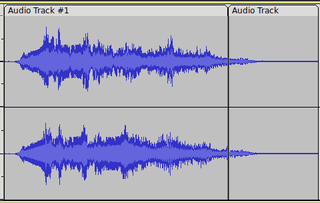
Fading In and Out in Audacity
As a remaining pair of Audacity outcomes which may be terribly useful, now we have now the outcomes “Fade In” and “Fade Out”. These are useful when making a clip to enter a podcast or completely different work.
1. Select a chunk inside the audio. Select a chunk that may make an fascinating part for a podcast.

2. Click on on on Outcomes >> Fade In.
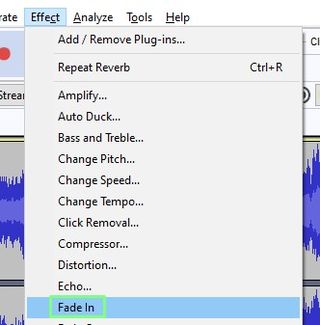
The fade outcomes differ in that you simply simply don’t get a dialog discipline or any shopper controls. The influence merely creates a amount gradient rising from zero to the clips inherent amount stage all through the scale of your selection.

Together with a fade out is handled within the similar technique.
1. Highlight the highest of the part to fade out.

2. Go to Outcomes and select Fade Out. Over the chosen measurement, the audio will now often fade out to silence over.
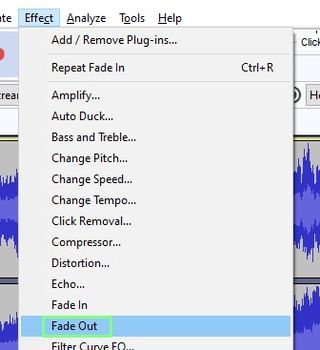
As you’ll see from the “Outcomes” drop down menu, there is a good assortment of built-in leads to Audacity. Each of these outcomes are worth investigating so that you simply simply get a wise sense of what each influence does to your audio.
There are fairly a couple of “modulation” form outcomes, as an illustration “Phaser” and “Wahwah,” which could create sweeping filtered leads to your audio. There are simple sounding outcomes that do exactly what they’re saying inside the title corresponding to “Reverse” and “Repeat” and there are completely different outcomes, a couple of of which we checked out beforehandthat allow you to influence the equalisation, take away noise and polish your audio.
Armed with this bundle of outcomes, whether or not or not its a refined environment, or a distorted sci fi robotic voice you now have enough skills to get the sound you need using this wonderful free and open provide software program.






